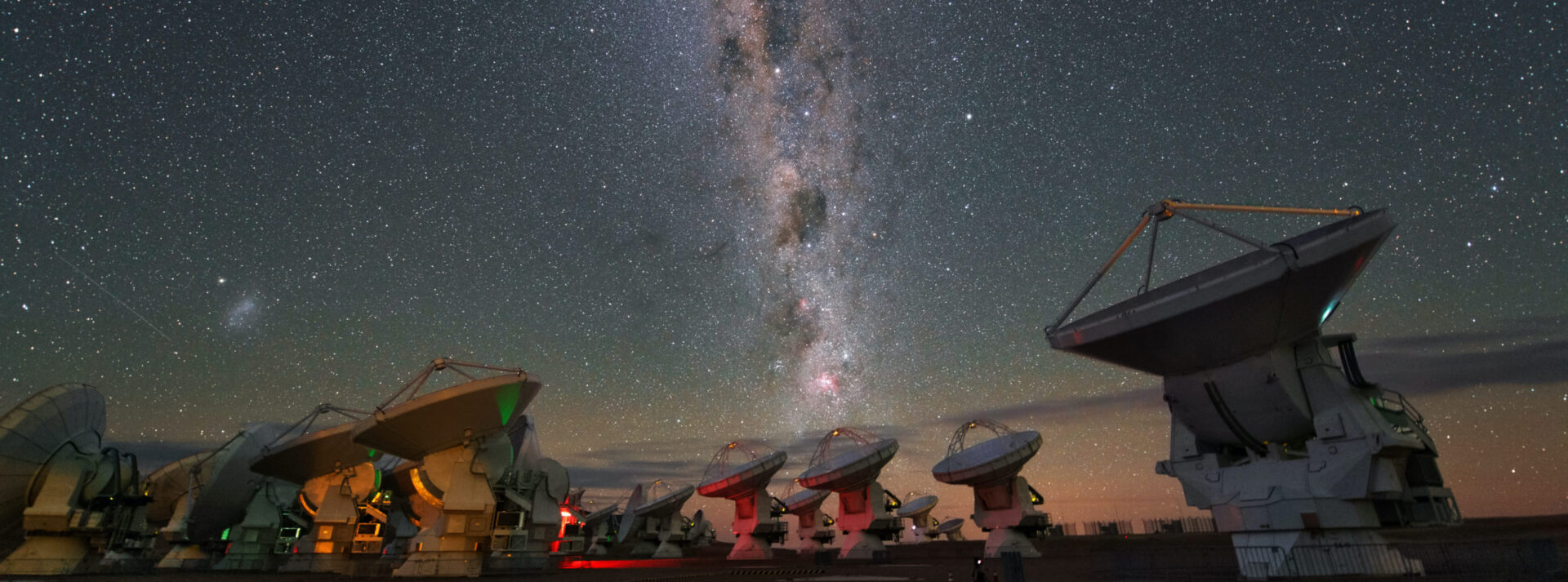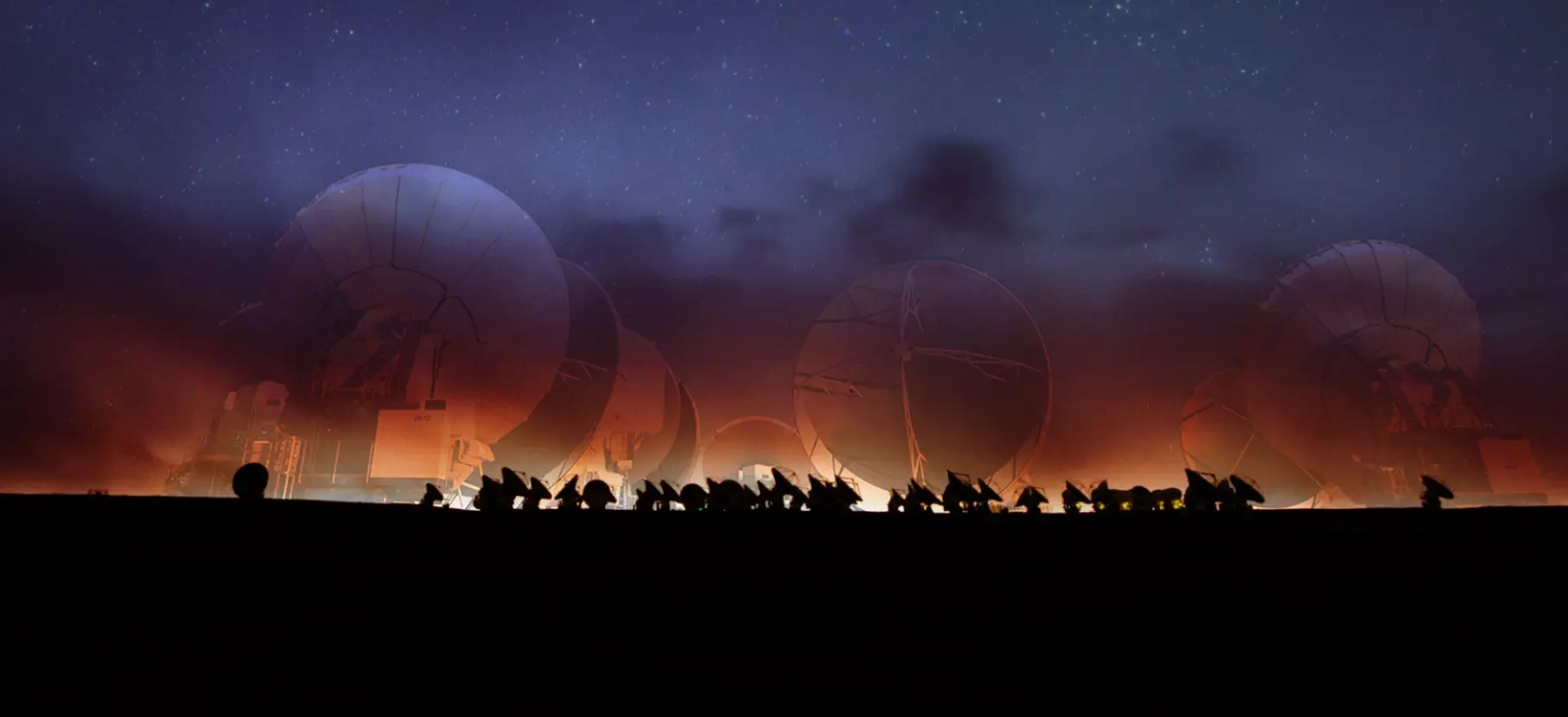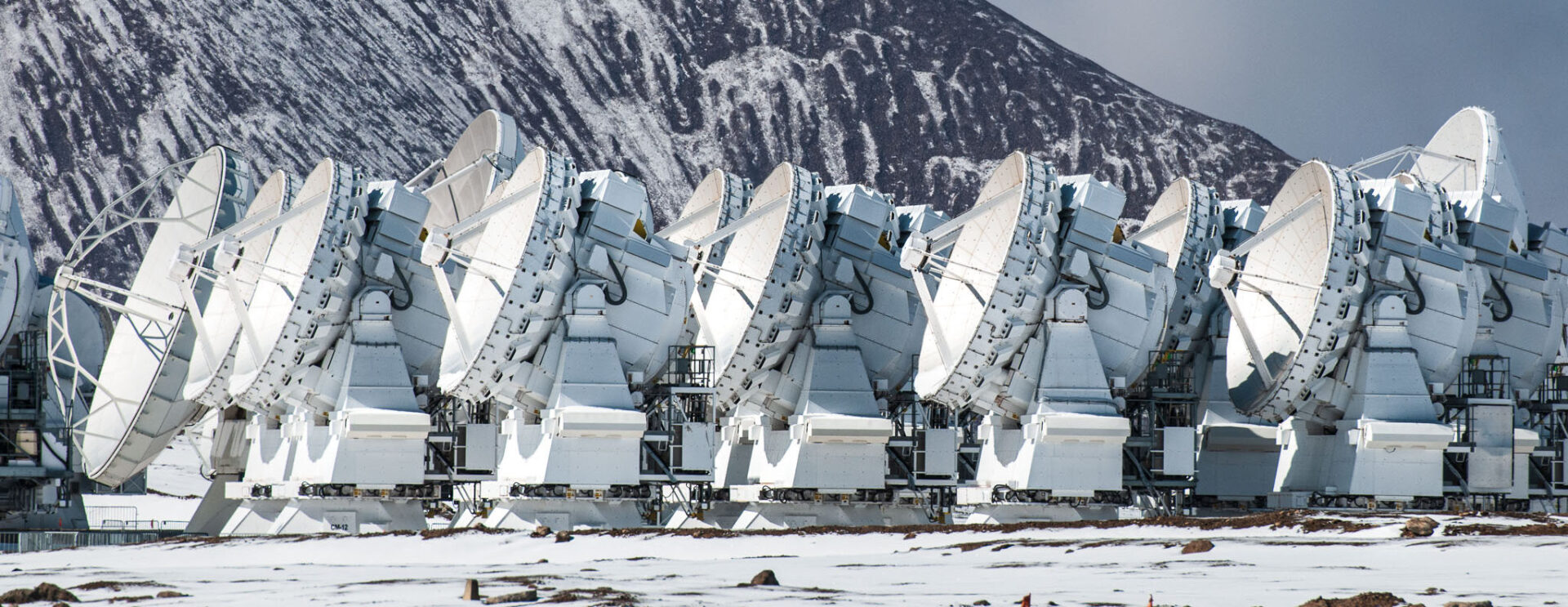New ALMA Observation Cycle will Mark its First Decade of Operations
On October 1, 2022, a new ALMA observation cycle began with a new record in demand. The ALMA Cycle 9 Review Process received a total of 1769 proposals requesting close to 28,000 hours of observation with the main array, which is a record oversubscription rate of 6.5 for the observatory. After considering the scientific rankings and operational considerations (e.g., configuration schedule, available time due to weather, regional balance) of the review process 286 high priority programs were selected. The titles and abstract of the selected programs are available on the ALMA Science Portal.
Cycle 9 Call for Proposals implemented a distributed peer review for all proposals except Large Programs, which continued to be reviewed by a panel process. ALMA is once again indebted to the community for their participation of the proposal process. Many helpful suggestions on the process were submitted by the reviewers, and a survey of the Cycle 9 Principal Investigators has been completed to obtain their feedback. The Joint ALMA Observatory (JAO) will be conducting a detailed analysis of the Cycle 9 results and the surveys to further improve the review process for Cycle 10.
The ALMA Proposal Review Committee (APRC) met from June 13-17 to recommend which Large Programs should be scheduled. The virtual meeting held across different time zones meant that some participants started discussions as early as 4 AM, while others ended as late as 11 PM. We thank the APRC for their dedication and patience in this process!
For the first time, Large Programs were also reviewed by external Science Assessors, who provided their expert assessment of individual Large Programs to the APRC but did not participate in the APRC meeting. Each external Science Assessor reviewed between 1 and 3 Large Programs in their area of expertise and wrote a scientific assessment for each assigned proposal. These assessments were taken into account by the APRC, during its evaluation meeting and for the composition of the consensus reports.
“We are very thankful for all the support we received from the community” explains John Carpenter, ALMA Observatory Scientist. “The 18 members of the ALMA Proposal Review Committee, the 71 external assessors who reviewed Large Programs, and the over 1000 reviewers who took part of the distributed peer review process. They are all essential to the success of the Cycle 9 proposal call”.
The community submitted a total of 1769 proposals requesting close to 28,000 h of 12-m Array time, with an overall subscription rate of 6.5. The number of submitted proposals and the subscription rate in Cycle 9 is slightly higher than that in Cycle 8 (1735 and 6.1 respectively). As a result, once again many excellent proposals could not be scheduled because of the high oversubscription.
ALMA Cycle 9 will run until September 2023 and will be the first cycle to observe at high frequencies with longer baselines, allowing astronomers to make new science with the new observations. A full report on the ALMA Cycle 9 Proposal Review Process will be available in the ALMA Science Portal soon.
Additional Information
ALMA is a partnership of ESO (representing its member states), NSF (USA) and NINS (Japan), together with NRC (Canada), MOST and ASIAA (Taiwan), and KASI (Republic of Korea), in cooperation with the Republic of Chile. The Joint ALMA Observatory is operated by ESO, AUI/NRAO and NAOJ.
Images
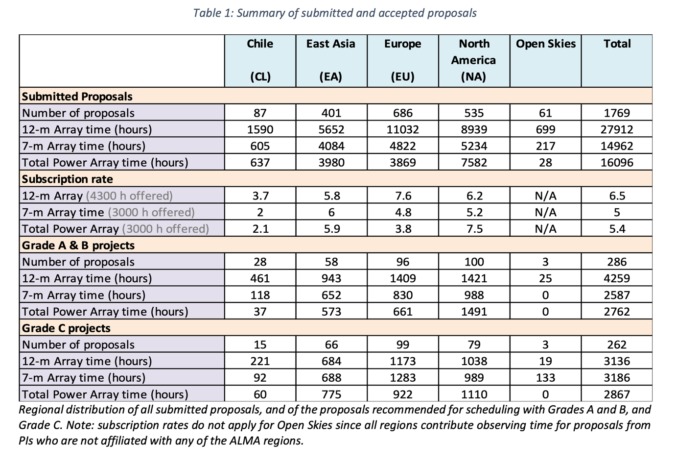
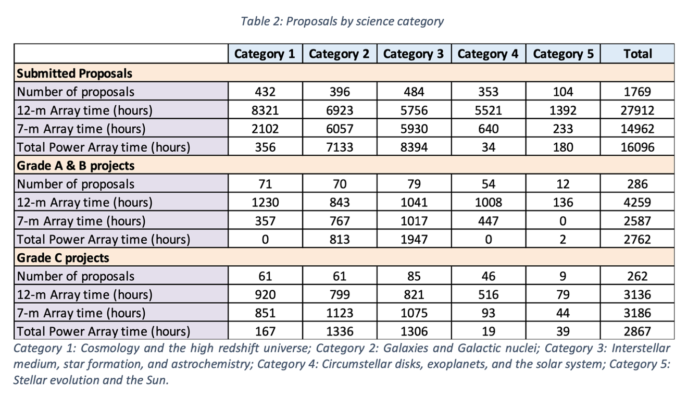
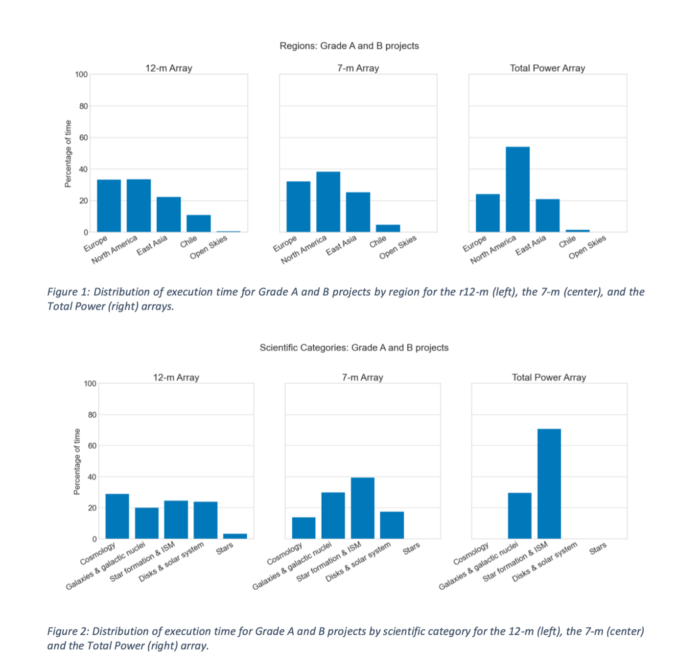
Contacts
-
Nicolás Lira
Education and Public Outreach OfficerJoint ALMA Observatory, Santiago - ChilePhone: +56 2 2467 6519Cel: +56 9 9445 7726Email: [email protected]
